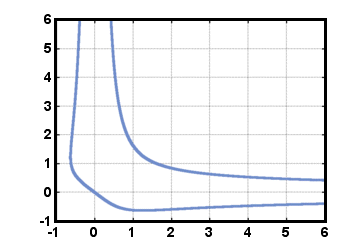Please wait while we process your payment
If you don't see it, please check your spam folder. Sometimes it can end up there.
If you don't see it, please check your spam folder. Sometimes it can end up there.
Please wait while we process your payment

By signing up you agree to our terms and privacy policy.
Don’t have an account? Subscribe now
Create Your Account
Sign up for your FREE 7-day trial
By signing up you agree to our terms and privacy policy.
Already have an account? Log in
Your Email
Choose Your Plan
Individual
Group Discount
Save over 50% with a SparkNotes PLUS Annual Plan!
 payment page
payment page
Purchasing SparkNotes PLUS for a group?
Get Annual Plans at a discount when you buy 2 or more!
Price
$24.99 $18.74 /subscription + tax
Subtotal $37.48 + tax
Save 25% on 2-49 accounts
Save 30% on 50-99 accounts
Want 100 or more? Contact us for a customized plan.
 payment page
payment page
Your Plan
Payment Details
Payment Summary
SparkNotes Plus
You'll be billed after your free trial ends.
7-Day Free Trial
Not Applicable
Renews July 20, 2025 July 13, 2025
Discounts (applied to next billing)
DUE NOW
US $0.00
SNPLUSROCKS20 | 20% Discount
This is not a valid promo code.
Discount Code (one code per order)
SparkNotes PLUS Annual Plan - Group Discount
Qty: 00
SparkNotes Plus subscription is $4.99/month or $24.99/year as selected above. The free trial period is the first 7 days of your subscription. TO CANCEL YOUR SUBSCRIPTION AND AVOID BEING CHARGED, YOU MUST CANCEL BEFORE THE END OF THE FREE TRIAL PERIOD. You may cancel your subscription on your Subscription and Billing page or contact Customer Support at custserv@bn.com. Your subscription will continue automatically once the free trial period is over. Free trial is available to new customers only.
Choose Your Plan
This site is protected by reCAPTCHA and the Google Privacy Policy and Terms of Service apply.
For the next 7 days, you'll have access to awesome PLUS stuff like AP English test prep, No Fear Shakespeare translations and audio, a note-taking tool, personalized dashboard, & much more!
You’ve successfully purchased a group discount. Your group members can use the joining link below to redeem their group membership. You'll also receive an email with the link.
Members will be prompted to log in or create an account to redeem their group membership.
Thanks for creating a SparkNotes account! Continue to start your free trial.
We're sorry, we could not create your account. SparkNotes PLUS is not available in your country. See what countries we’re in.
There was an error creating your account. Please check your payment details and try again.
Please wait while we process your payment

Your PLUS subscription has expired
Please wait while we process your payment
Please wait while we process your payment

Techniques of Differentiation
| h'(x) = f'(g(x))g'(x) |
Alternately, if we let y = g(x), z = f (y), then we may write the formula in the following way (using the alternate notation for derivatives):
 = =   |
This is easy to remember, because it looks like the dy are quantities that cancel. While convenient, one must be careful to realize that dy is just a notational device; it does not represent a number and cannot be haphazardly manipulated as such.
Sometimes we encounter an equation relating two variables that does not come from a
function. One familiar example is the equation for a unit circle, x2 + y2 = 1.
While this equation is not a function in itself, its graph of its solutions is made
up of the graph of two functions defined on the interval [- 1, 1]:
f (x) =  and g(x) = -
and g(x) = -  . These functions are said to be
implicit functions for the equation.
. These functions are said to be
implicit functions for the equation.
In the case of the unit circle, we were able to write down the implicit functions explicitly, but this is not always possible. As an example, consider the equation x2y2 = x + y, the graph of whose solutions resembles an "infinite boomerang," displayed below.

It is not possible to find a simple formula for x or y, so we cannot write down the implicit functions. But we still may want to know the slope of the graph at a particular point, that is, the derivative of an implicit function at that point. Implicit differentiation allows us to do this.
The idea is to differentiate both sides of the equation with respect to x (using the chain rule where necessary). The two sides must remain equal under this differentiation. Then we solve for y'(x) in terms of x and y. The fact that we need to know both the x- and y-coordinates of a point in order to compute the derivative should come as no surprise, since two different points on the graph may very well have the same x- coordinate. The full set of solutions to an equation is not, in general, the graph of a function.
Please wait while we process your payment

